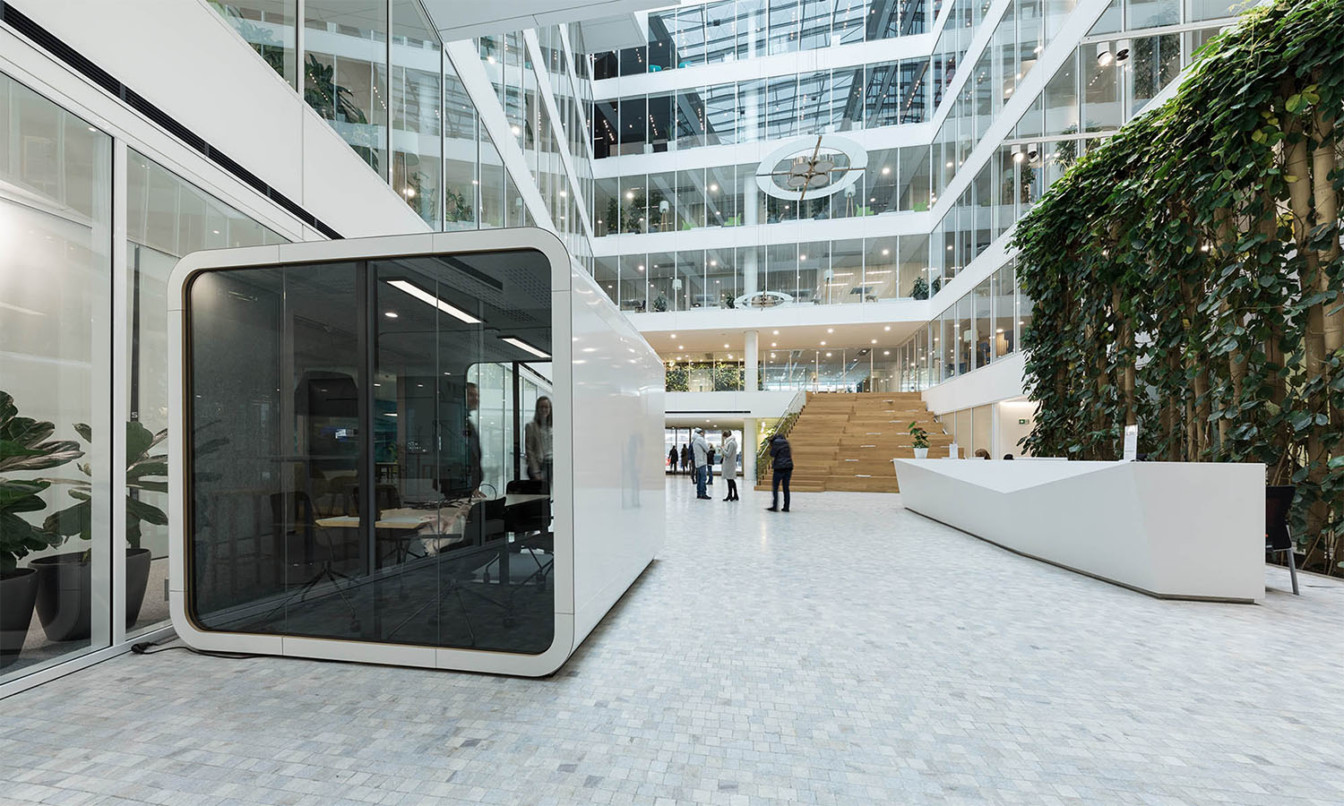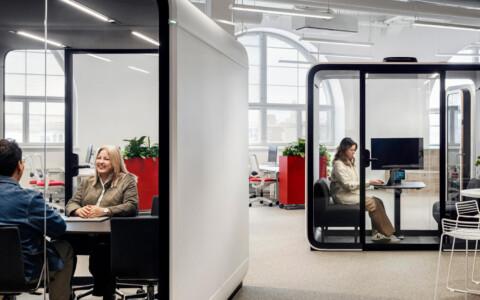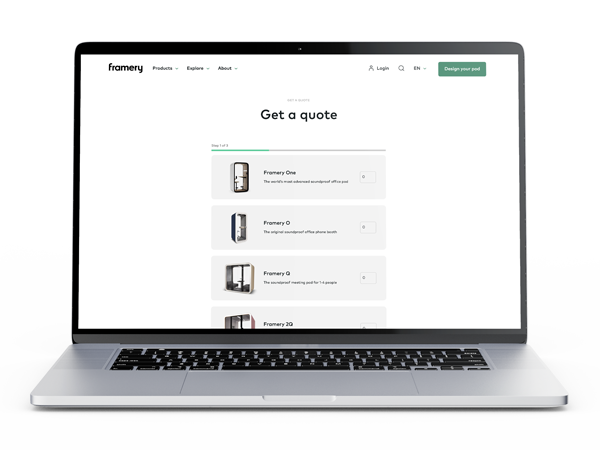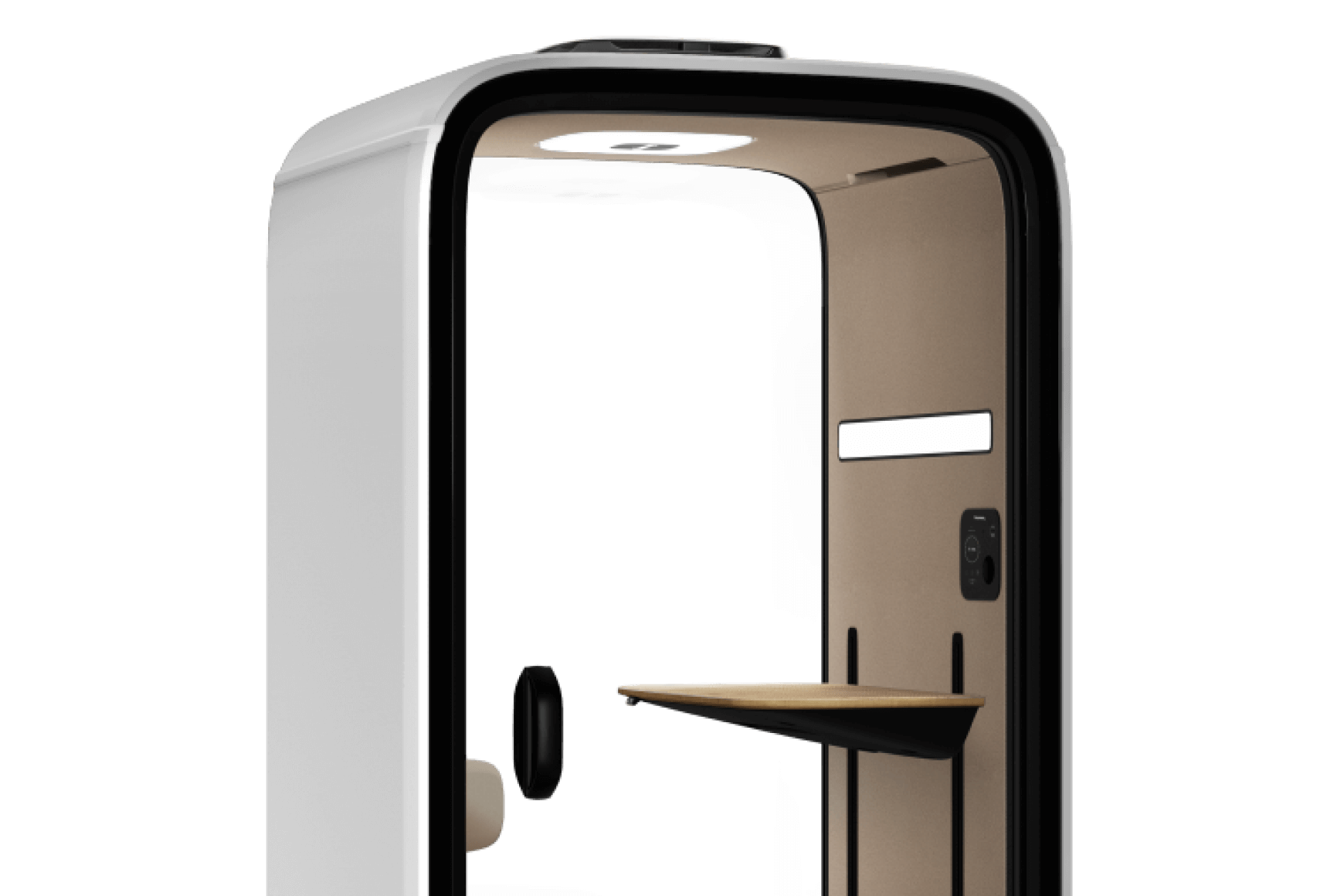Noise is a common distraction in the workplace – especially in the open office.
Noisy offices are a problem for many. Exposure to elevated noise levels can have significant physiological and psychological effects. Effects of noise to cognitive performance of office workers are deservedly gaining more and more attention as well, with open plan offices being deemed disadvantageous to productive knowledge work.
How noise becomes a distraction in the workplace
Ambient background noise or poor interior acoustics are often blamed when a work environment gets in the way of productivity.
Noise is experienced subjectively – one person may enjoy working in a coffee shop with a little background buzz, while others may find it impossible to concentrate.
Some sounds become more distracting than others because of their physical characteristics – like frequency, amplitude and complexity. The level of distraction of a sound is also dependent on a person’s physical and psychological state.
In an office with very low noise levels and carefully designed acoustics, concentration can still prove challenging.
What are examples of noise distractions?
Noise is a distraction if it’s audible enough to understand.
Research shows that noise distractions in open plan offices are mostly the result of background speech that is irrelevant to the listener. In a quiet office, for a discussion to be inaudible, it either has to take place halfway across the space or in another room.
This is the noise problem of open plan offices.

Measuring office noise distractions
It is difficult to quantifiably measure office noise distractions.
Uncertainty about office acoustics is also reflected in the methods used to measure acoustic performance of work environments.
The level of sound insulation of an acoustic element is typically expressed using a unit called Sound Reduction Index (R or Rw). It’s a good way to describe the ability of a single component, for example a wall, to reduce sound passing through it.
The Sound Reduction Index is less than helpful though if it’s used to describe the effectiveness of office furniture, since sound can easily pass around it. Sound Reduction Index does an inadequate job of describing the sound insulation of closed spaces as well because those are always combinations of various components, such as walls, doors, ventilation channels, etc.
How do you solve office noise distractions?
Soundproof pods are a great solution for noise distractions in the office.
Products in the market like Framery’s award-winning pods, that not only eliminate noise enabling focused work but also provide much needed social cues in workplaces are becoming more common.
New measurement standards offer improved ways to test and communicate acoustic performance. The ISO 23351-1 classification system tests the sound insulation of furniture ensembles, such as closed and semi-closed spaces.
All in all, significant steps are being taken to help people working in less than ideal environments. And having a better understanding of the problems they face is one of them.
Sources
Basner M, Babisch W, Davis A, Brink M, Clark C, Janssen S & Stansfeld S. Auditory and non-auditory effects of noise on health. The Lancet. 2014;383(9925):1325-1332.
Haapakangas A. Subjective reactions to noise in open-plan offices and the effects of noise on cognitive performance – problems and solutions [Ph.D.]. University of Turku; 2018.
When the walls come down – how smart companies are rewriting the rules of the open workplace [Internet]. Oxfordeconomics.com. 2018 [cited 16 September 2018]. Available from: https://www.oxfordeconomics.com/my-oxford/projects/336497
Bernstein E, Turban S. The impact of the ‘open’ workspace on human collaboration. Philosophical Transactions of the Royal Society B 2018;373(1753).
Turku University of Applied Sciences is developing a new standard [Internet]. Turku University of Applied Sciences. 2018 [cited 16 September 2018]. Available from: https://www.tuas.fi/en/services/furniture-ensemble/







